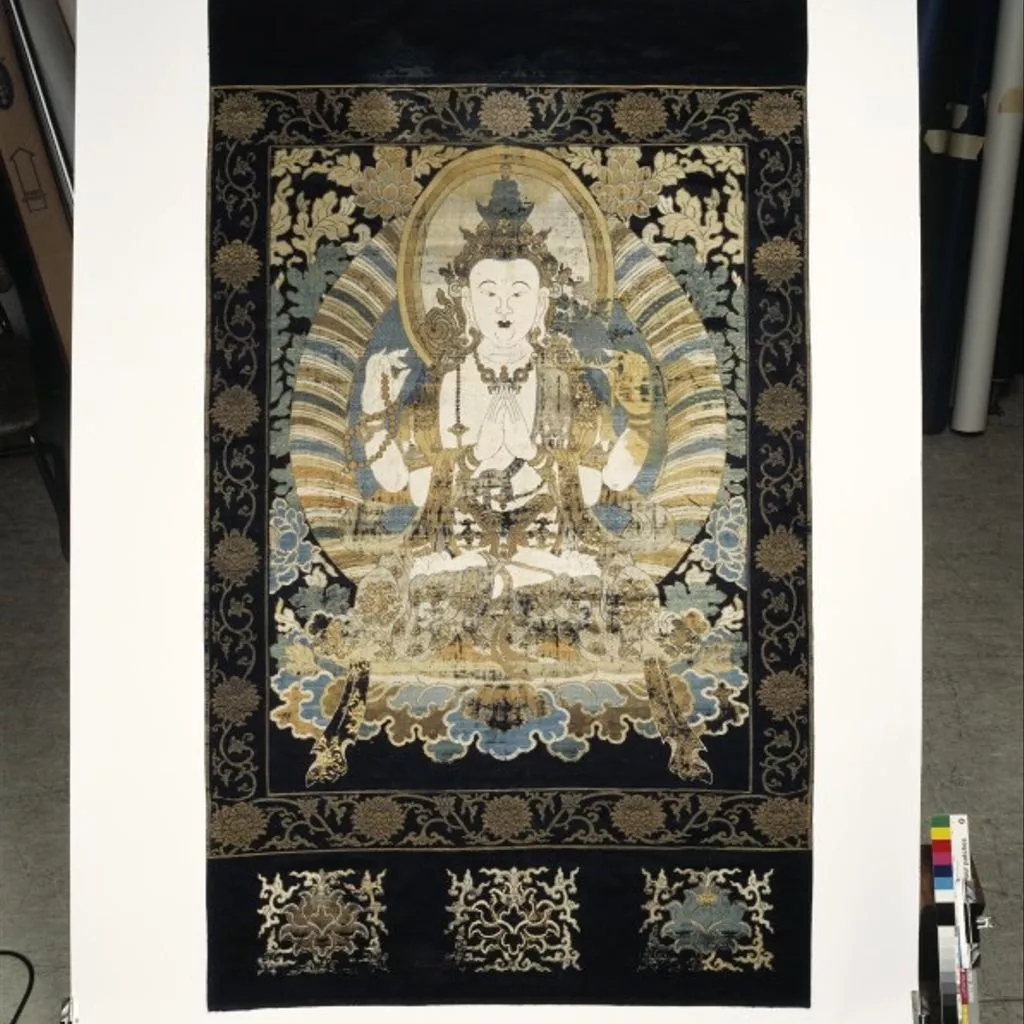Description
Woven silk Buddhist picture, China, 1740-1800
The last dynasty of China was the Qing dynasty, which ruled from 1644 to 1911. During the Qing period, Chinese Buddhism was much influenced by Tibetan practices. Here the Bodhisattva Guanyin is shown in Tibetan style. He presses two hands together in the hezhangyin (anjalimudra) position, a gesture of salutation. His other two hands hold prayer beads and a lotus.
Picture woven with silk threads of seven colours, wound gold thread and flat gold strip on a rich blue satin ground. The image shows a figure of Bodhisattva Guanyin, seated on a lotus throne in a mandorla with wave patterns, with two hands pressed together in the 'anjali mudra', and the other two holding prayer beads and a lotus. He is clothed in garments of silk with key, cloud-band and pomegranate decoration, a narrow fur, and a profusion of jewellery. Flowers and leaves form the two spandrels above the mandorla.
Surrounding the picture is a four inch wide woven frame containing lotus flowers connected by scrolling tendrils all in gold. In a plain panel beneath the frame are three large lotus blossoms with cloud-band tendrils making square formations.
The picture is woven in white, pale blue, mid-blue, blue-green, buff, pale yellow and pale orange silk, gold thread and gold strip, bound by a portion of the silk wrap in 1/3 twill, on a dark blue satin ground.




